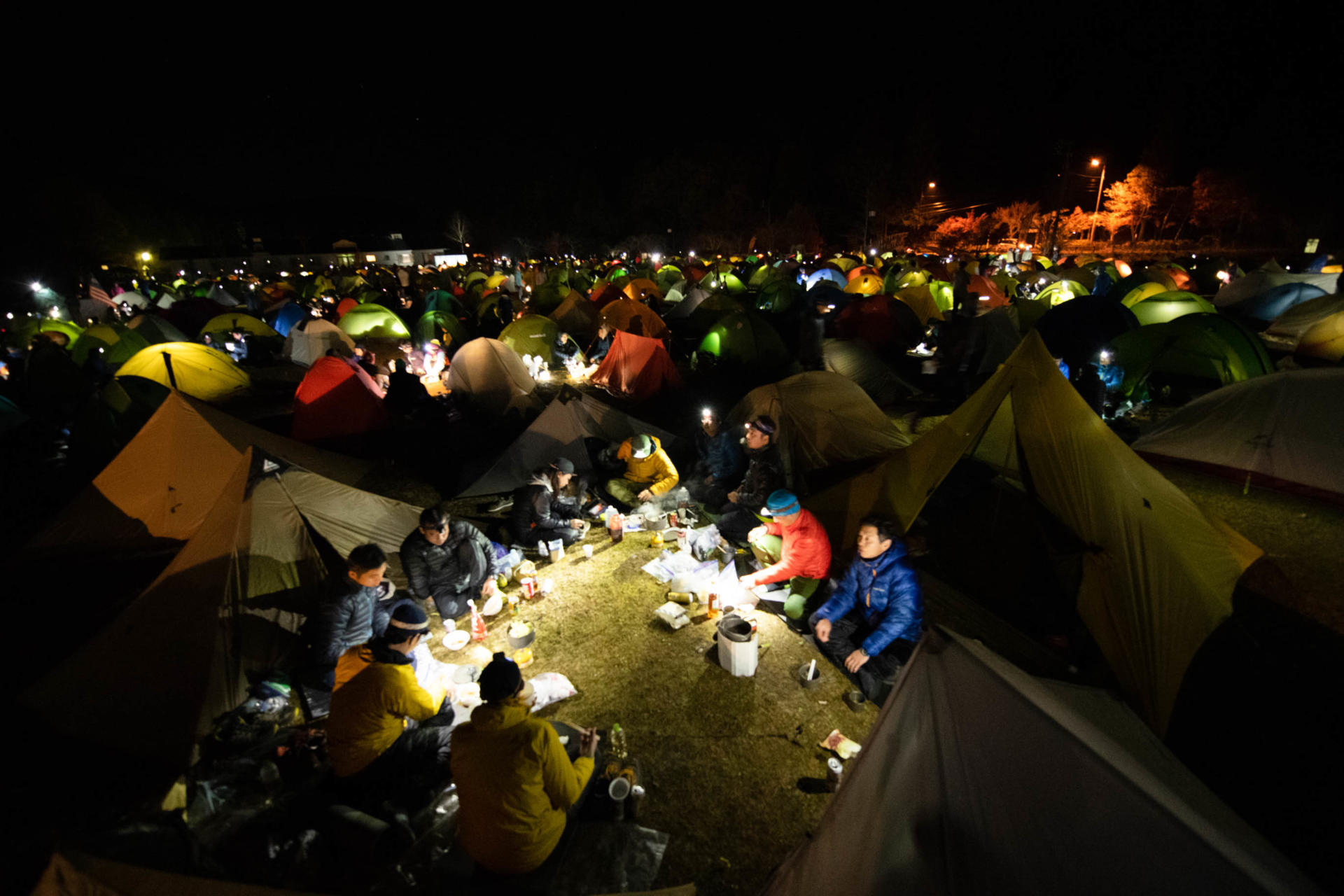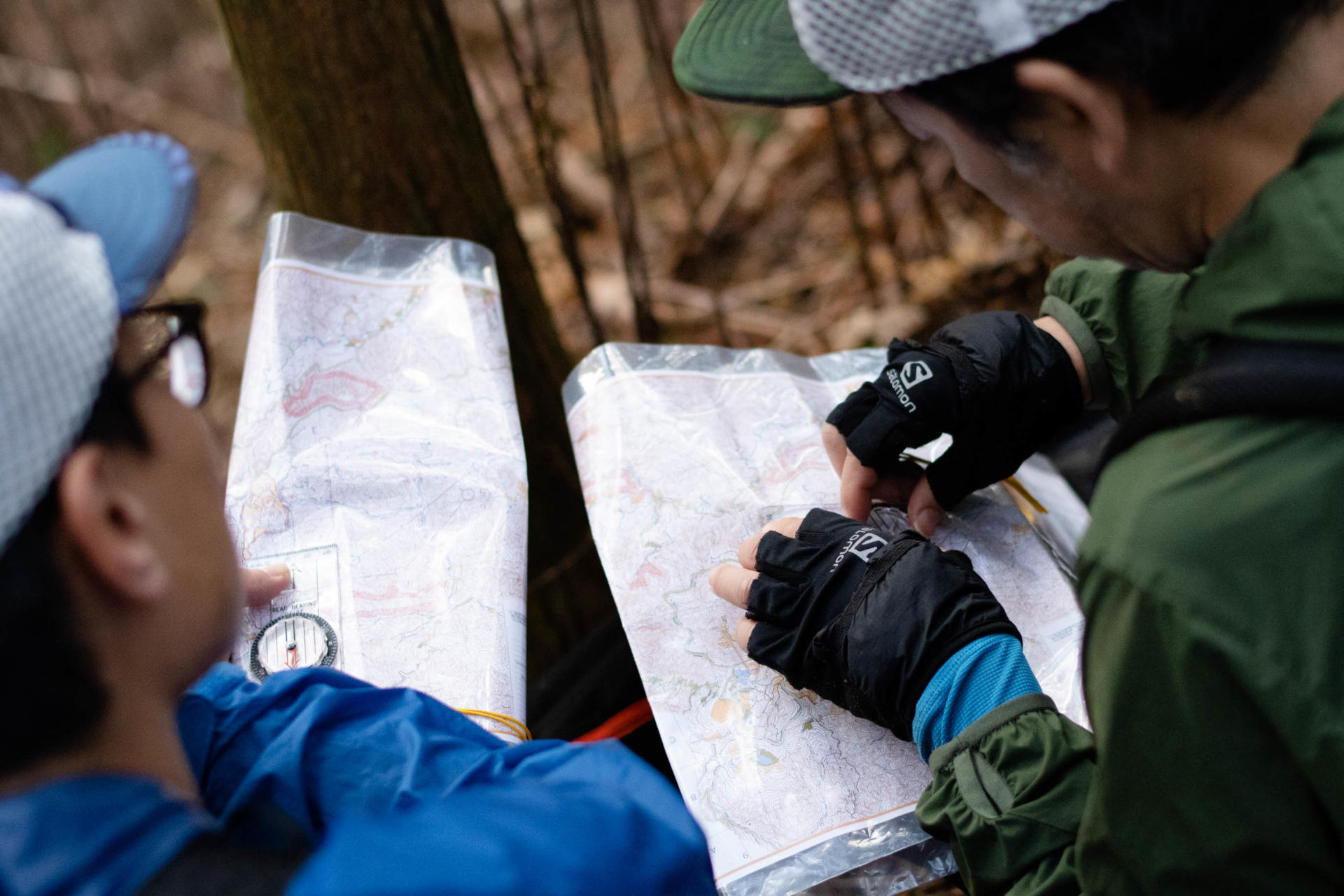It’s been almost seven hours of running in the mountains. The sun is setting, it’s freezing and you’re off trail with only your running partner and the bare essentials in your backpack. While this may sound like a dire situation, this is a typical scenario during the annual Original Mountain Marathon (OMM), one of the oldest adventure races in the world.

Gear fanatics might recognize OMM for producing some of the finest ultralight clothing and backpacks out there. But what makes this brand unique is that it’s not the gear that came first, but the race. Every item OMM produces is designed specificallyto withstand this arduous competition. Back in 1968, a group of British adventurers led by mountaineer Gerry Charnley designed the Karrimor International Mountain Marathon, a navigational mountain race. Using Karrimor gear, they headed out into unforgiving terrain to test themselves and their gear against the U.K.’s notorious wet weather and strong winds. The race would be held in a different location in the U.K. every year with a sparse completion rate (just 30%). When asked if the race was too difficult, Charnley responded, “Everybody knows this is the KIMM, the toughest event on the calendar and it’s not a Sunday afternoon picnic.”
Over time, the race became known as the Original Mountain Marathon, still keeping up its harsh rules in an even harsher environment. In fact, the Japan edition of the OMM is held in November, when snow is already falling in the mountains. The reason? To make it harder for the runners. The race challenges runners physically and mentally as participants must use self-reliance, quick route selection, kit management, knowledge of their team skills, endurance, teamwork and sound mountain judgment.
THE RULES
The two-day race only allows teams of two. Runners can choose from the Line or Score course. The Line Course is a time trial where you are given a map with a set number of checkpoints—or controls—which you must reach over a certain period of time. Line course teams opt for the Elite A or B course, with the Elite course reaching up to 47 kilometers at 2,200 meters altitude in just one day.
The Score Course is a points-based rogaining system. The team that collects the most points across the two days wins. There’s a Long, Medium and Short Score Course, with the Long Score Course going for seven hours on Day One and six hours on Day Two. Although this means you’ll technically “finish” the race without running out of time and getting disqualified, this requires strategy to decide your route and which controls you want to reach for the most points.
Because the maps are given out at the starting point on the first day of the race, there’s really no way to train except to study the area and terrain and know how to translate maps into trails that fit you and your team’s skill level. The pink areas marked on the maps are out of bounds, whether its for safety issues or lack of permission to use the area.
At night, all teams must reconvene at the overnight camp, usually up in the mountains and hours away from the starting point. Teams are not allowed to help one another; if someone asks the staff for help or even medical assistance, they are immediately disqualified.

THE JAPAN RACE
It’s a warm March afternoon at The Warehouse, a renovated storage house surrounded by rice paddies and cabbage fields in Saitama Prefecture, just north of Tokyo. Chill house music plays in the background while Hideyuki Komine scales the bouldering wall making up half of this space. Jeff Jensen sits in the lounge area planning for the upcoming OMM events in Japan. What was initially supposed to be a warehouse for OMM Japan’s race gear and events became a side project for bouldering and outdoor enthusiasts who wanted someplace to live out their nomadic work life.
In 2012, Canada native Jeff Jensen ran a bouldering gym in Saitama where mountaineer Hideyuki Komine and self-proclaimed “gear fanatic” Takashi Chiyoda were regular customers. Eventually, the three quit their jobs to start Nomadics, importing the world’s top ultralight outdoor gear into Japan. One of the brands they sought out was OMM, and if they were going to sell OMM gear in Japan, they wanted to bring the race here too.
Jensen and Komine flew to South Wales in 2013 to challenge themselves to their first-ever OMM race. While they were prepared physically—Komine is an avid trail runner and Jensen scales Mt. Fuji on snow and ice every year on New Year’s Day—they were no match for OMM. Impressed by how extreme it was, they brought the race to Higashi Izu the following year. Using their personal networks as well as their connections through Nomadics, they attracted 450 people participants. They also led a series of backcountry navigation workshops to prepare curious enthusiasts for the first race of its kind in Japan.
More than half of the inaugural participants were trail runners—but only a quarter finished. They learned quickly OMM is not a trail run.
“Japan’s trail and mountain infrastructure is crazy good and is one of the best in the world. Canada is much wilder. We can’t go hut to hut if we’re in the mountains; we have to pitch a tent,” says Jensen, who grew up in the Banff region. “For OMM, it’s not just running skills, it’s mountain skills and navigation. It might snow while you’re up there. You have to be able to pitch a tent in the snow and have enough clothing so you don’t freeze. Two years ago when we held the race at Yatsugatake, the temperature dropped to -11 Celsius at night.”

The intense nature of OMM didn’t scare the crowd away; in fact, the Japan edition continued to grow over the years with 700 people signing up for the second race and 1,000 for the third. They set the maximum capacity to 1,300 participants for the fourth race onwards as that was the number they felt safe with the size of the area. If they wanted to open up to even more people, they’d have to add new courses or expand the race area.
Finding the space to do an off-trail event in Japan is hard. Depending on the location, the Nomadics team secures proper permissions with the Ministry of Forestry, cities, prefectures and landowners before creating the race map and setting up control stations. Each year, the race takes place across different areas of Japan.
“OMM Japan 2018 in Okumikawa, Aichi was personally the most interesting course because the navigation was challenging,” says Komine who is now OMM Japan’s race director. “This really proved that OMM is tough both physically and navigationally. This year, people will be challenged by the altitude. There are fewer forest trails compared to the previous years and people are going to be exposed to the elements and wind especially while camping.”
COMMUNITY

Part of the reason why OMM requires runners to return to the overnight camp area is to build rapport among racers.
“In the beginning, we were lucky to put together a great team. We had risk assessment, course creation, planning—and all at a high level,” Jensen recalls. “Everyone on our team was the best at what they did. Because we were able to put that team together, we could grow the OMM community here through the races and workshops.”
While trail running and mountain sports in Japan have become more popular, overall navigation skills remain low. The result has been an increase in people getting lost in the mountains.
“Japanese people are good at rock climbing and trail running, but there’s still a lot of improvement needed on mountain skills,” says Komine. “We want to educate people and teach self-reliance through adventure races like this.”
If OMM sounds too extreme, don’t worry. The OMM Lite—the entry-level race—started two years ago. This summer event is designed to give people a feel of an OMM race without worrying whether they or their gear is strong or good enough. The OMM Lite only has a Score course making it easier for people to complete. It’s still a two-day race and there are some off-trail areas, but most controls are on trail. Each team can consist of two to five people and families and friends who are not participating can camp with you in the overnight camping area. There are food booths, music and even a bar. Last year in Hakuba, they kept the night gondola running so people could enjoy stargazing from the mountains. This year, the OMM Bike (the cycling version of OMM Lite) will be held simultaneously as well.
“The coolest thing about all this is creating this community and growing it,” says Jensen. “We’re helping everyone get a higher level of understanding of how to enjoy the mountains safely. And that’s pretty cool.”
For more information or to sign up for the upcoming events, go to OMM Japan or OMM (Global).
OMM Lite / Bike
When: July 13-14, 2019
Where: Hakuba / Otari, Nagano
OMM Japan
When: Nov. 9-10, 2019
Where: Kirigamine / Kurumayama, Nagano




